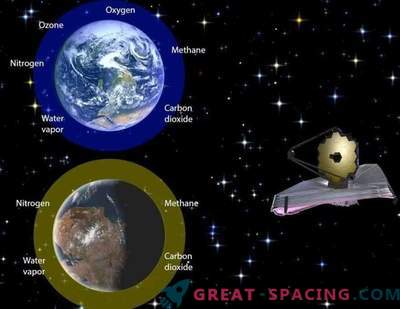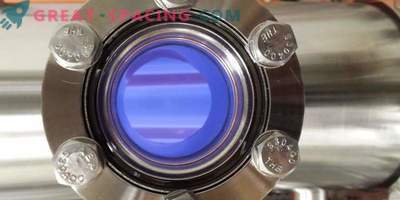
When searching for life outside our system, some exoplanets glow brighter than others. New research has decided to rely on the study of atmospheric layers. To do this, use giant clouds of stellar material and rays released into space.
Previously, scientists were looking for potential bio-signals - by-products of life, like oxygen and methane, accumulating in the atmosphere. But it takes a lot of time. The new method concentrates on deeper signatures that are easier to find with fewer resources.
It is about finding molecules created from the fundamental prerequisites for molecular nitrogen (78% of our atmosphere). They are endowed with a powerful infrared emitting ability, which increases the chances of detection.
Earthly life hints at the fact that it is worth looking for rich in water vapor, oxygen and nitrogen of the atmosphere. The last two elements move stably in molecular form. But near the active dwarf star, extreme space weather creates different chemical reactions that can be used as indicators of atmospheric composition. Solar stars at a young age are deprived of rest and release powerful eruptions, ejecting particles at light speeds. But yellow and orange stars (cooler than ours) are capable of supporting these processes for billions of years.
When the particles approach the exoplanet, they fill the atmosphere with the necessary energy to separate molecular nitrogen and oxygen into separate atoms. Next, reactive nitrogen and oxygen atoms produce a whole chain of reactions that create atmospheric beacons.

The figure shows a starlight illuminating the atmosphere of an exoplanet. When the rays pass through the atmosphere, the beacon molecules absorb energy and send it into space in the form of IR rays.
The researchers used the model to calculate how much nitric oxide and hydroxyl are formed and how much will collapse in the ozone atmosphere. It turned out that ozone falls to a minimum, fueling the creation of atmospheric lighthouses.
These chemical reactions are valuable sources for scientists. They know which gases create rays at certain wavelengths, so you can easily understand the atmospheric composition. To create a large number of beacons will require a remarkable amount of molecular oxygen and nitrogen. As a result, they can be found, and with them a life-friendly atmosphere. This method is also suitable for excluding terrestrial planets without a magnetic field. For the study used data TIMED and instrument spectroscopy SABER.

The TIMED mission has been observing the upper terrestrial atmosphere for 15 years, which made it possible to understand how this region contacts the lower and upper atmospheric layers.
Now it remains to put this knowledge into practice. If it is possible to fix the signals, which in proportion converge with the earthly ones, then the planet is a good contender for the search for life. SABER information shows that the frequency of intense star storms is related to the strength of the heat signals from atmospheric beacons.
Moreover, the method will make it possible to find not only a potential planet, but also a whole system, because the contact between the star and the atmosphere affects the existence of life.











































